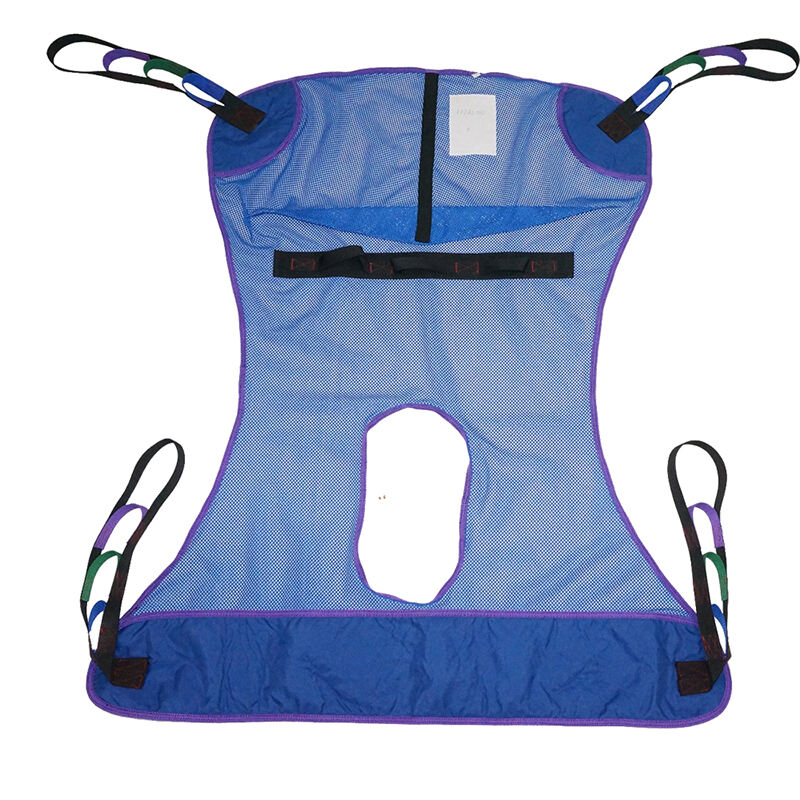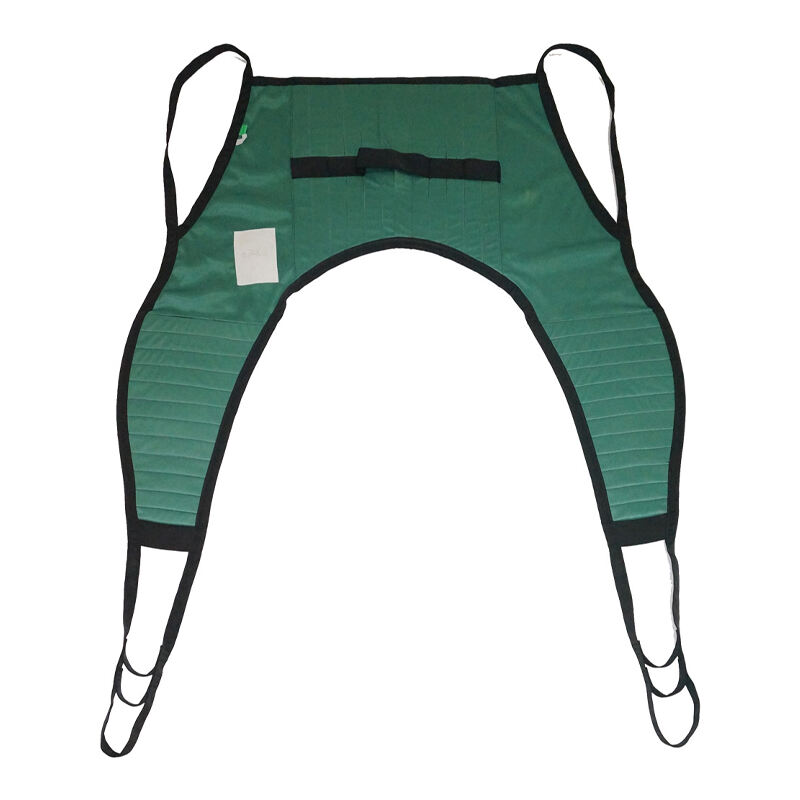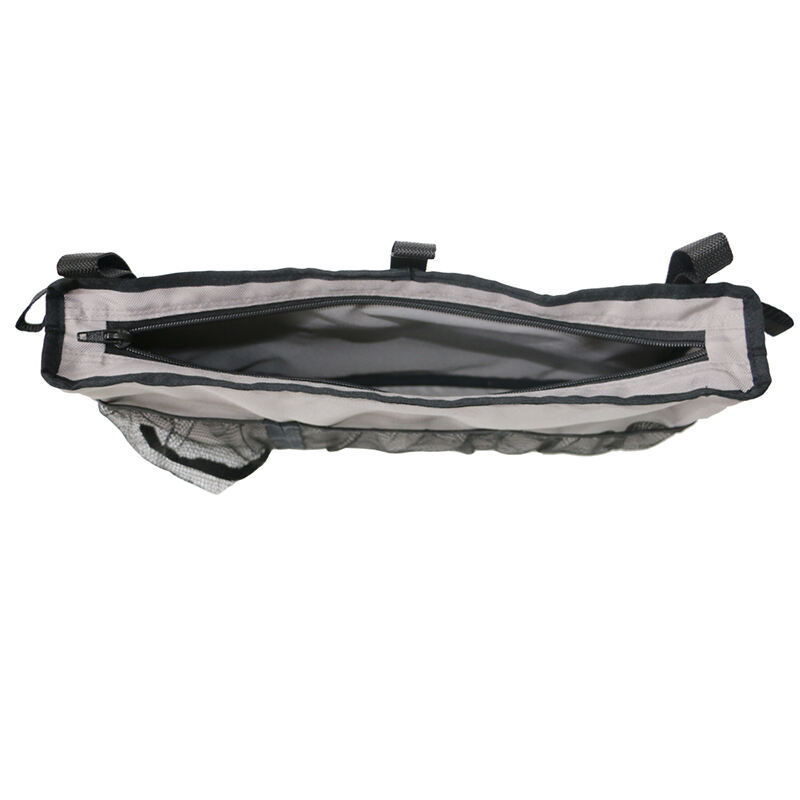How to choose the right toilet sling: improving the convenience of daily care for patients
Understanding Toileting Slings
A toileting sling is a specially designed supportive device that helps safely and comfortably assist patients with mobility challenges during toileting. These slings are engineered to support individuals who cannot manage their body weight independently, ensuring a secure and dignified transfer to and from the toilet. Toileting slings typically have an open-bottom design, allowing for easy access and better hygiene practices without the need for complete undressing.
Toileting slings play a crucial role in patient care by significantly reducing the physical strain on caregivers and enhancing the dignified experience of patients. They help prevent caregiver injuries by minimizing the need for manual lifting. Additionally, they play a vital part in reducing the risk of patient falls by providing stable support throughout the transfer process. According to safety statistics, the use of assistive devices like toileting slings has helped decrease fall-related injuries in healthcare settings by 20%, ensuring both patient safety and caregiver relief.
Key Considerations When Choosing a Toilet Sling
When selecting a toilet sling, weight capacity is a fundamental consideration. Ensuring that the sling can support the patient's weight is critical for safety and effectiveness. To assess this, review the weight limits specified by the manufacturer for each sling option. It is advisable to choose a sling with a weight capacity slightly higher than the patient's weight to accommodate potential fluctuations and provide a margin of safety.
Another essential aspect to consider is the material and comfort of the toileting sling. Slings are crafted from various materials, including breathable fabrics and those with additional padding, which can significantly impact patient comfort during use. Opting for breathable materials can help reduce skin irritation, while padded designs offer enhanced support. Additionally, easy-to-clean materials can simplify maintenance, ensuring hygiene and durability.
Design features also play a crucial role in the selection of a toileting sling. Focus on factors such as size, shape, and adjustability. These elements are pivotal in determining the sling's fit and function. For instance, slings with adjustable straps and ample leg openings can enhance both safety and comfort, making transfers more efficient. Furthermore, the width of the sling affects its stability and support, contributing to a secure and comfortable experience for the patient.
Different Types of Toileting Slings
Choosing the right type of toileting sling is crucial to ensure patient safety and comfort. Full body slings provide comprehensive support during patient transfers. They are ideal for individuals who require full-body assistance, encompassing the head, body, and legs. This design ensures maximum stability and is particularly beneficial for patients with limited mobility or strength, making transfers safe and secure.
On the other hand, U-slings are specifically designed for toilet transfers, offering targeted support that allows for easy access during toileting. They are favored for their ease of use, facilitating a quick and comfortable experience for both caregivers and patients. The open-bottom design of U-slings enhances convenience, allowing for straightforward adjustments around the waist and legs without excessive maneuvering.
Lastly, transfer slings are versatile and flexible, suitable for a wide range of patient movements and types. They allow for a variety of transfers, such as from a wheelchair to a toilet, bed, or shower. Their adaptable nature makes them an excellent choice for diverse patient needs, providing a balance between support and freedom of movement.
Notable Products in the Market
The Mesh Full Body Sling with Commode Cut-Out-CGSL208 is designed for maximum toileting efficiency and breathability. Made from quick-drying mesh fabric, it offers full head and neck support, ensuring comfort during transfers. The commode cut-out feature makes it especially useful in toileting scenarios, and its ease of attachment to lifts is highly praised by caregivers. This product also includes a high back section for additional support, contributing positively to transfers and movement management.
The Divided Leg Padded U-Sling without Head Support-CGSL206 is specifically designed to aid transfers while enhancing patient comfort. This open-bottomed sling facilitates different types of transfers, such as from bed to wheelchair. Its durable polyester fabric and closed-cell foam padding provide added comfort, and the covered webbing straps help protect sensitive skin from abrasion. The absence of head support makes it less restrictive, facilitating easier movement and handling.
The Portable Attachment Tote Caddy Walker Storage Bag-CGSL616 brings convenience and organization to both users and caregivers by providing a practical storage solution. Ideal for carrying personal items, books, or medical supplies, its mesh pockets offer quick access to frequently used items. Its machine-washable and durable design ensures long-term use, while secure straps keep it firmly attached to walkers, adding to its overall utility in everyday scenarios.
Practical Tips for Using Toileting Slings
Ensuring the correct usage techniques of toileting slings is crucial for both safety and effectiveness. To begin with, always follow the manufacturer's instructions for proper positioning and attachment. Using demonstrations or guidance from health professionals can be invaluable in gaining expertise. Ensure the sling is appropriately fitted to avoid discomfort or injury. Regularly check for wear or damage before each use, as using a compromised sling can lead to accidents. Adjust slings and equipment according to the user's individual needs, accommodating their posture and mobility levels for optimal support.
Proper maintenance and care of slings not only enhance their longevity but also maintain hygiene. Regular cleaning following the care label instructions helps prevent the buildup of bacteria or odors. Avoid using harsh chemicals that might weaken the fabric or cause skin irritation; instead, use mild detergents. Additionally, inspecting the sling for any signs of damage such as fraying or weak spots is essential. Address these issues promptly to ensure continued safe use. By integrating these maintenance practices, the durability and safety of toileting slings are significantly improved.
Conclusion: Making an Informed Choice
Choosing the appropriate toileting sling involves careful consideration of patient needs, safety assurances, and care protocols. It is crucial to select a sling that not only supports the patient effectively but also complies with safety standards to prevent accidents. Evaluating features such as material, adjustability, and compatibility with lift systems can significantly impact the decision-making process. Additionally, understanding the care and maintenance requirements ensures long-lasting use and hygiene. By taking these key points into account, you are better positioned to make informed purchasing decisions that meet both functional and safety needs effectively.

 EN
EN































